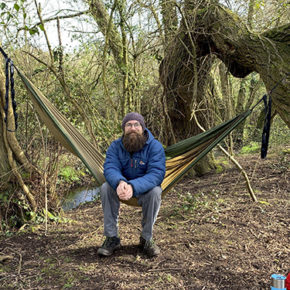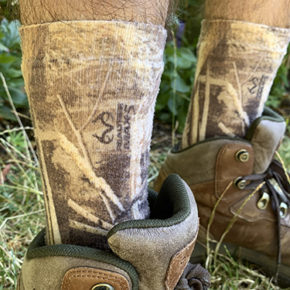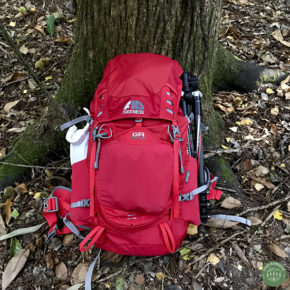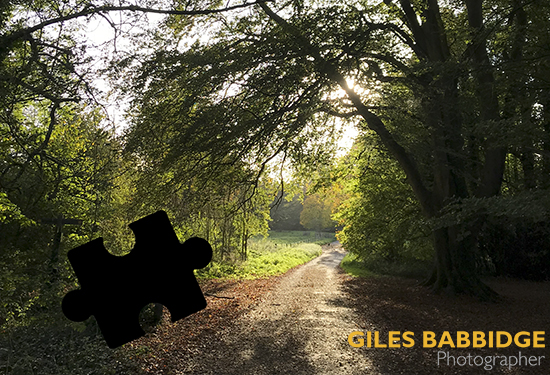If you haven’t checked out Part 1 of this 2-part article, you can find it here. I’d really recommend you take a look; it’ll give you the background and setup information surrounding the photo shoot described – and what follows will make much more sense, given some context!
Ok, so picking up where we left off, let’s get to the important bit – the picture making.
In total, we had a set of nine products which needed photographing. In principle, once the initial item was set up and captured, the rest of the objects would follow – working in groups of similar items for convenience. This was the theory, but you know what they say about theories…
First up was a packet of hand warmers which, as you can see in the picture below, presented its own challenges. Not only was the packaging shiny and uneven, it also wasn’t self-supporting.
To get around these problems, we first removed the product from its wrapper, replacing it with a piece of card. A small tab of double-sided tape allowed the additional removal of some of the existing surface wrinkles, but it still wasn’t perfect. A small piece of foam was inserted and already, the overall form looked better.
The packet was then suspended from a horizontal bar using display thread (similar to fishing line); in order to attach the thread to the packet, a tiny hole was made in each corner. Additional thread was also stretched down to a couple of sandbags on the ground. In effect, this arrangement stretched the packaging in four directions and did a good job of removing the majority of wrinkles; the remainder were tidied up in Photoshop, along with the removal of the thread.
Because of the reduced working space, I was forced to shoot all the images using an 80-200mm f/2.8 lens; attached to the Nikon D800, this was positioned pretty far back, some way into the shadows. Why? Well, the extra pulling power of that telephoto lens equated to reduced depth-of-field, even at f/8 or f/11 – helping me blur out any join marks visible in the background. Had we been able to go with the ideal scenario of a seamless backdrop, this step wouldn’t have been necessary and I’d most likely have coupled a 24-70mm f/2.8 or even a 50mm f/1.8 lens to the camera.
Like I said, it’s always easier if similar objects are grouped together and shot one after another. Invariably, the lighting remains unchanged, the backdrop doesn’t need moving and any support stands will be kept in place out of necessity.
So, with the first item in position, it was time to think about the lighting – beginning with the backdrop. In our pre-shoot meeting, we’d agreed that a colourful, graded effect was preferable; to compliment the products, orange and red were selected for two reasons. Firstly, they tied in with the client’s branding. Secondly, the punchy colours complimented the products and thirdly, we knew that by using such bold colours at the size of the finished display boards (size A0), the shots would draw people’s attention as they wandered around the expo hall.
In the shot above, you can see how we created the desired effect – a single mini tripod-mounted flash gun, placed on the floor; the head was angled downwards so that the bounced light then struck the backdrop at an angle. You’ll notice that a number of modifiers were used here – firstly, some thin foam to reduce the output further and also some cine foil to act as a gobo (a way to stop light spilling into unwanted areas – i.e. back towards the camera). Pretty? No. Effective? Most definitely.
In the picture below, you can see how the product was then lit – a simple, single soft box aimed at a 3/4 angle directly in front of the packet.
I’m going to round things off at this point, as the danger is that this piece could go on and on. However, if you have any questions about about the kit, logistics or arrangement of this assignment, you can get in touch simply by clicking here or dropping a few lines in the comments section below.
So in conclusion…
The plastic packets were the most tricky items to shoot, in no small part due to reflections and texture – and, unsurprisingly, they took the longest to complete. From then, the larger items were somewhat easier.
As you can see in the picture at the very top of this article, the general lighting setup remained much the same, tweaked slightly for each of the products. As is so often the case, it’s the planning and attention to detail which pays dividends on shoots like this. Scratches on a mannequin, fluff on a sock, flaws in the production of a webbing strap – all these issues can (and must) be overcome where the aim is to promote one’s brand, product or service as effectively as possible.
Ok, so the setup may not be that attractive (no-one could ever say it was glamorous!), but that’s not the important thing.
Feedback from the client following the show was good and for me personally, I’m glad I was able to produce this highly effective set of images at such short notice.
As a parting shot, then… If you didn’t see what the final arrangement looked like at ISPO, here’s the snap I was sent by my client:













